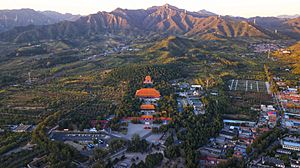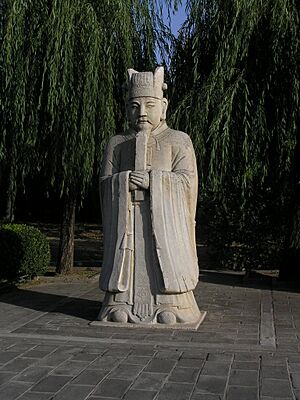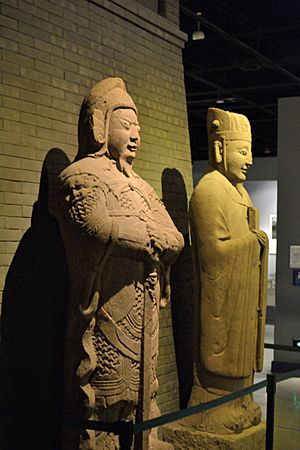Ming tombs facts for kids
| UNESCO World Heritage Site | |
|---|---|
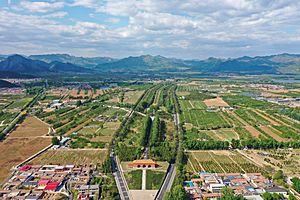
Dagong gate (Red in the middle) and Spirit way of the Ming tombs (behind the gate).
|
|
| Location | Beijing and Nanjing, China |
| Criteria | Cultural: i, ii, iii, iv, vi |
| Inscription | 2000 (24th Session) |
| Extensions | 2003; 2004 |
| Website | http://www.mingtombs.com/ |
The Ming tombs are special burial places for emperors of the Ming dynasty in China. The very first Ming emperor's tomb is in Nanjing. But most of these tombs are grouped together near Beijing. This group is known as the Thirteen Tombs of the Ming dynasty.
They are located about 42 kilometers (26 miles) northwest of Beijing's city center. This area was chosen carefully by the third Ming emperor, the Yongle Emperor. He picked the spot based on feng shui rules. Feng shui is an ancient Chinese practice that helps find the best places for buildings and graves. After building the Forbidden City in 1420, the Yongle Emperor chose this valley for his own tomb. Later emperors also built their tombs in the same beautiful valley.
Thirteen Ming emperors are buried here, starting with the Yongle Emperor. The first Ming emperor, the Hongwu Emperor, is buried near Nanjing. One emperor, the Jingtai Emperor, was not buried here. He was buried west of Beijing in a smaller tomb.
For a long time, common people were not allowed to visit the tombs. In 1644, an army led by Li Zicheng attacked and burned many of the tombs. This happened before they captured Beijing. Later, in 1725, a new emperor made sure the tombs were looked after. He gave a special job to a descendant of the Ming imperial family. This person's duty was to perform important ceremonies at the tombs.
Today, the Ming tombs are part of a special UNESCO World Heritage Site. This site is called the Imperial Tombs of the Ming and Qing Dynasties. It includes other important tombs in China too.
The Grand Layout of the Ming Tombs
The location of the Ming tombs was chosen very carefully. This was done using Feng Shui principles. These rules say that bad spirits and winds from the North must be blocked. So, an arc-shaped valley at the foot of the Jundu Mountains was picked. This area is about 40 square kilometers (15 square miles). It is a quiet valley with dark earth and calm water. All these things were important for a good burial site according to Feng Shui.
A long road, about 7 kilometers (4.3 miles) long, leads to the tombs. It is called the "Spirit Way" or Sacred Way. This road is lined with impressive statues of animals and officials. It starts with a huge stone archway built in 1540. This archway is one of the biggest stone archways in China.
Further along the Spirit Way, you will see the Shengong Shengde Stele Pavilion. Inside, there is a giant stone statue of a Bixi. A Bixi is a mythical creature that looks like a turtle. It carries a huge stone tablet on its back. Four tall white marble pillars, called Huabiao, stand at each corner of the pavilion. Each pillar has a mythical beast on top. The road also has 18 pairs of stone statues of mythical animals. These statues are carved from single stones and are larger than real life. They lead to a three-arched gate called the Dragon and Phoenix Gate.
Today, only three of the tombs are open to visitors. These are Changling, Dingling, and Zhaoling. Changling is the largest tomb. Dingling is special because its underground palace has been explored by archaeologists. The Ming tombs became a UNESCO World Heritage Site in 2003.
Who is Buried Here?
The table below lists the emperors and empresses buried in the Thirteen Tombs. They are listed in the order they were buried.
| Name | Chinese/pinyin | Emperor | Empresses and imperial concubines | Date | Picture | Coordinate |
|---|---|---|---|---|---|---|
| Changling | Chinese: 長陵; pinyin: Cháng Líng | Yongle Emperor | Empress Renxiaowen | 1424 |  |
40°18′5.16″N 116°14′35.45″E / 40.3014333°N 116.2431806°E |
| Xianling | Chinese: 獻陵; pinyin: Xiàn Líng | Hongxi Emperor | 1425 | 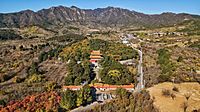 |
40°18′18.12″N 116°14′15.61″E / 40.3050333°N 116.2376694°E | |
| Jingling | Chinese: 景陵; pinyin: Jǐng Líng; literally "Scenic Tomb" | Xuande Emperor | Empress Xiaogongzhang | 1435 |  |
40°17′54.14″N 116°15′08.52″E / 40.2983722°N 116.2523667°E |
| Yuling | Chinese: 裕陵; pinyin: Yù Líng | Zhengtong Emperor | Empress Xiaozhuangrui Empress Xiaosu |
1449 | 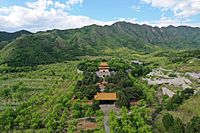 |
40°18′49.33″N 116°13′55.56″E / 40.3137028°N 116.2321000°E |
| Maoling | Chinese: 茂陵; pinyin: Mào Líng | Chenghua Emperor | Empress Xiaomu Empress Xiaozhenchun Empress Xiaohui |
1487 |  |
40°18′51.60″N 116°13′36.17″E / 40.3143333°N 116.2267139°E |
| Tailing | Chinese: 泰陵; pinyin: Tài Líng | Hongzhi Emperor | Empress Xiaochengjing | 1505 | 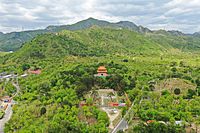 |
40°19′23.33″N 116°12′59.90″E / 40.3231472°N 116.2166389°E |
| Kangling | Chinese: 康陵; pinyin: Kāng Líng | Zhengde Emperor | Empress Xiaojingyi | 1521 |  |
40°19′10.03″N 116°12′13.40″E / 40.3194528°N 116.2037222°E |
| Yongling | Chinese: 永陵; pinyin: Yǒng Líng | Jiajing Emperor | Empress Xiaojiesu Empress Xiaolie Empress Xiaoke |
1566 | 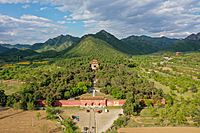 |
40°17′18.09″N 116°15′06.05″E / 40.2883583°N 116.2516806°E |
| Zhaoling | (Chinese: 昭陵; pinyin: Zhāo Líng | Longqing Emperor | Empress Xiaoyizhuang Empress Xiao'an Empress Dowager Xiaoding |
1572 | 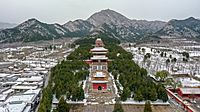 |
40°17′28.76″N 116°12′38.55″E / 40.2913222°N 116.2107083°E |
| Qingling | Chinese: 慶陵; pinyin: Qìng Líng | Taichang Emperor | Empress Xiaoyuanzhen Empress Dowager Xiaohewang Empress Dowager Xiaochun |
1620 | 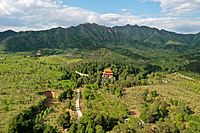 |
40°18′29.43″N 116°14′01.32″E / 40.3081750°N 116.2337000°E |
| Dingling | Chinese: 定陵; pinyin: Dìng Líng; literally "Tomb of Stability" | Wanli Emperor | Empress Xiaoduanxian Empress Dowager Xiaojing |
1620 | 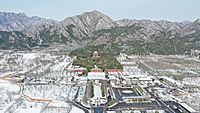 |
40°17′42.43″N 116°12′58.53″E / 40.2951194°N 116.2162583°E |
| Deling | Chinese: 德陵; pinyin: Dé Líng | Tianqi Emperor | Empress Xiao'aizhe | 1627 |  |
40°17′15.01″N 116°15′35.91″E / 40.2875028°N 116.2599750°E |
| Siling | Chinese: 思陵; pinyin: Sī Líng | Chongzhen Emperor | Empress Xiaojie Noble Consort Tian |
1644 | 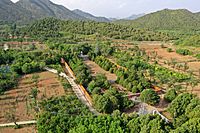 |
40°16′08.69″N 116°11′32.64″E / 40.2690806°N 116.1924000°E |
Not all Ming emperors are buried in these Thirteen Tombs. For example, the first Ming emperor, Hongwu Emperor, is buried elsewhere.
Images for kids
See also
 In Spanish: Tumbas de la dinastía Ming para niños
In Spanish: Tumbas de la dinastía Ming para niños
- Ming Xiaoling Mausoleum in Nanjing
- Ming Ancestors Mausoleum in Jiangsu Province
- Eastern Qing tombs near Beijing
- Western Qing tombs near Beijing
- Fuling Tomb east of Shenyang in Liaoning
- Zhao Mausoleum north of Shenyang in Liaoning
- Yongling Tombs east of Fushun in Liaoning


